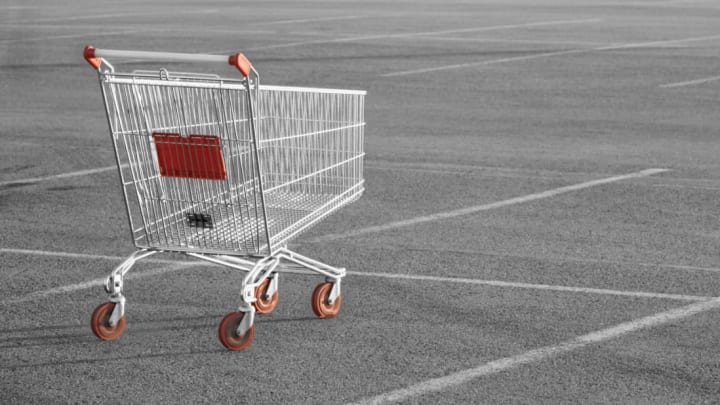On the spectrum of aberrant behavior, leaving a shopping cart in the middle of a parking space doesn’t quite rise to the level of homicide. But poor cart etiquette is nonetheless a breakdown of the social fabric, one in which some consumers express little regard for others by failing to return a cart to its proper place. Why does this happen?
In a piece for Scientific American, Krystal D’Costa examined some plausible reasons why shoppers avoid the cart receptacle. It might be too far from where they parked, they might have a child that makes returning it difficult, the weather might be bad, or they might have physical limitations that make returning it challenging. Alternately, they may simply believe it’s the job of the supermarket or store employee to fetch their used cart.
According to D’Costa, cart returners might be motivated by social pressure—they fear a disapproving glance from others—or precedent. If no other carts have been tossed aside, they don’t want to be first.
People who are goal-driven aren’t necessarily concerned with such factors. Their desire to get home, remain with their child, or stay dry overrides societal guidelines.
Ignoring those norms if a person feels they’re not alone in doing so was examined in a study [PDF] published in the journal Science in 2008. In the experiment, researchers observed two alleys where bicycles were parked. Both alleys had signs posted prohibiting graffiti. Despite the sign, one of them had markings on the surfaces. Researchers then stuck a flyer to the bicycle handles to see how riders would react. In the alley with graffiti, 69 percent threw it aside or stuck it on another bicycle. In the alley with no graffiti, only 33 percent of the subjects littered. The lesson? People might be more likely to abandon social order if the environment surrounding them is already exhibiting signs of neglect.
In another experiment, researchers performed the flyer trial with a parking lot that had carts organized and carts scattered around at separate times. When carts were everywhere, 58 percent of people left the flyers on the ground compared to 30 percent when the carts were cared for.
Social examples are clearly influential. The more people return carts, the more likely others will do the same. There will, of course, be outliers. Some readers wrote to D’Costa following her first piece to state that they didn’t return carts in order to keep store workers busy and gainfully employed, ignoring the fact that the primary function of those staff members is to get the carts from the receptacle and back to the store. It’s also rarely their primary job.
Until returning carts becomes universally-accepted behavior, random carts will remain a fixture of parking lots. And ALDI will continue charging a quarter deposit to grab one.
[h/t Scientific American]
